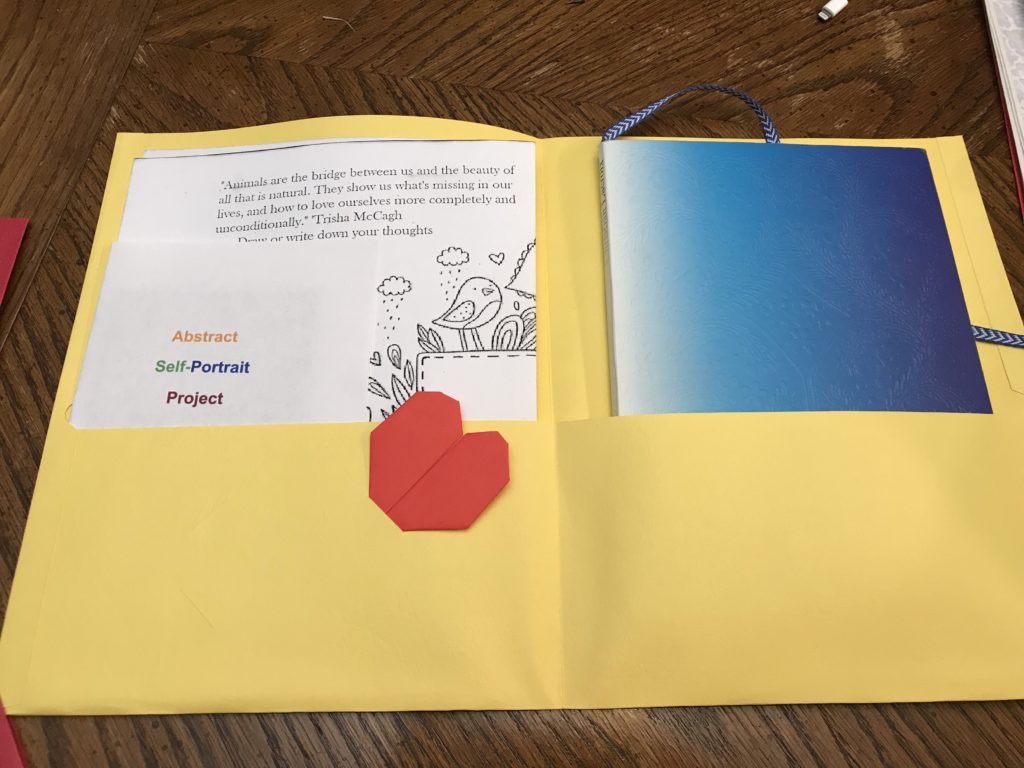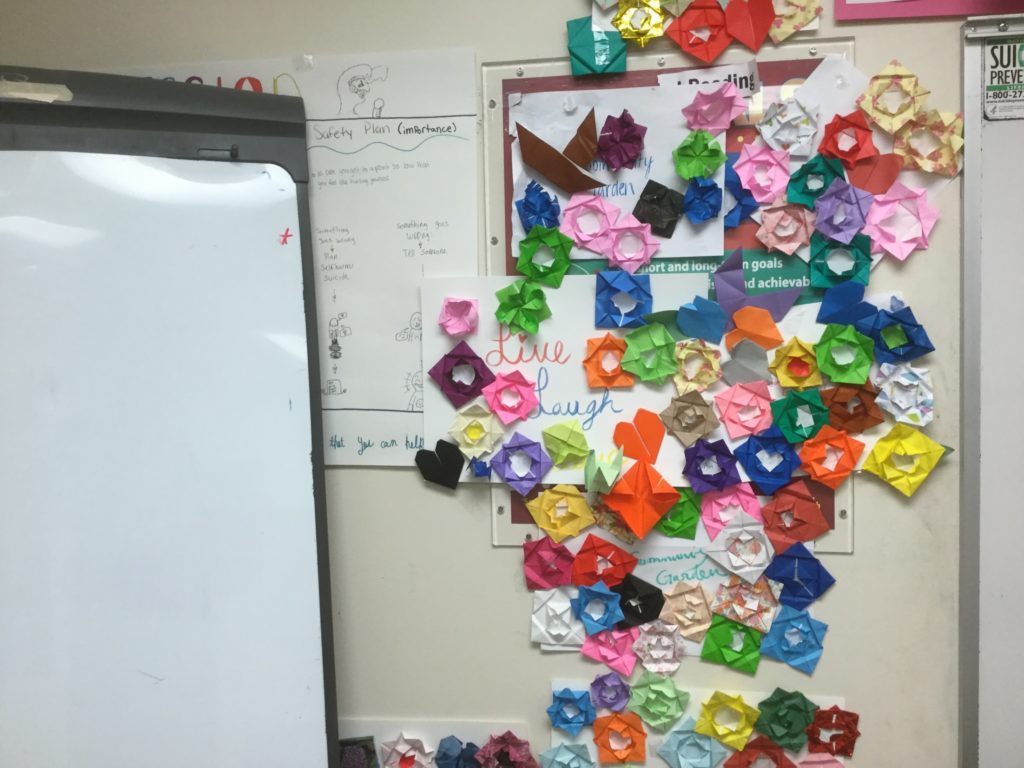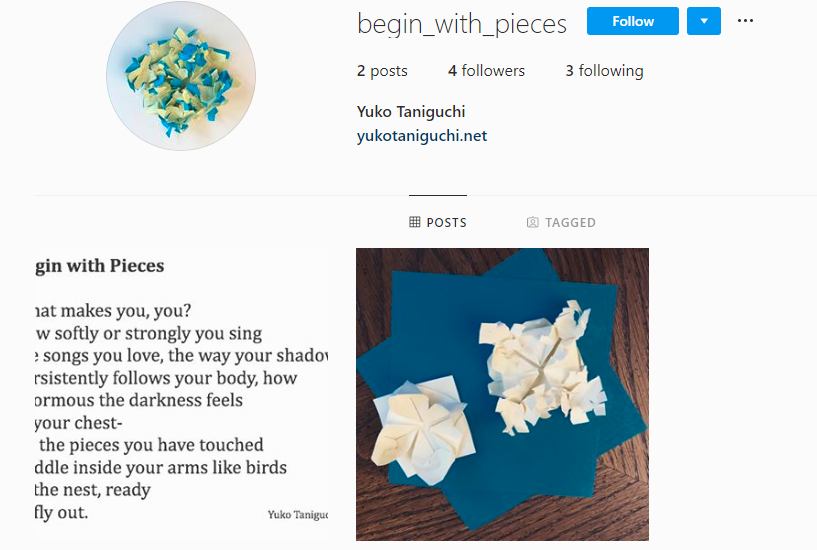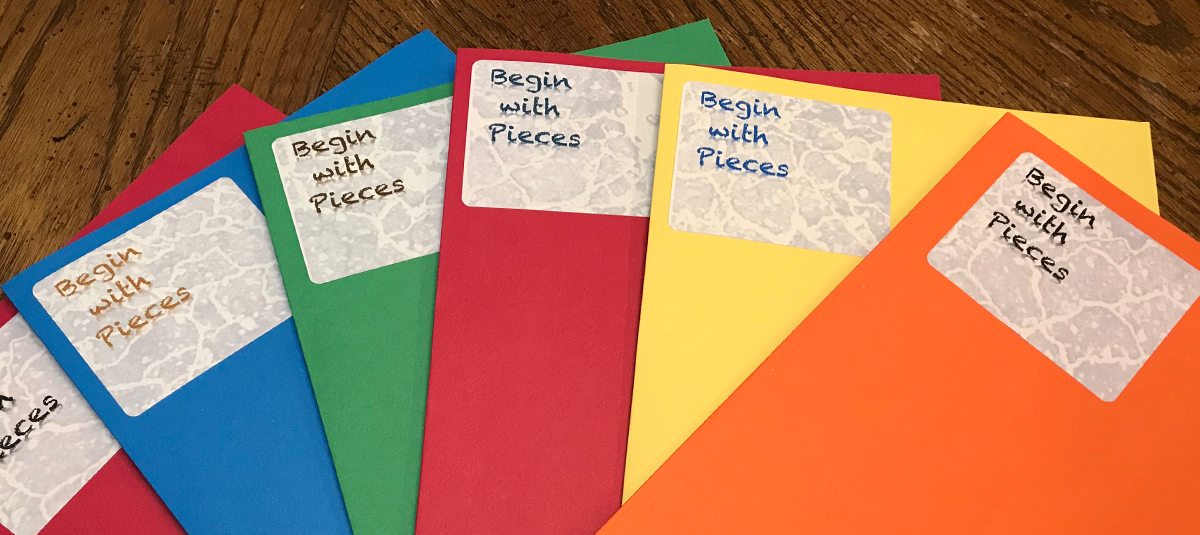Content Warning: This piece contains mentions of suicide and self-harm.
Every week for the past eight months, I have facilitated the same session from 4-5 pm on Tuesdays. I have stood in the same room and waited for adolescents between the ages of 10 and 18 years old to find a seat in front of an array of brightly colored folders laying out on the table. Once they find their way to the group room, our session begins.
Our sessions are housed within an acute psychiatric unit on the Mayo Clinic campus in Rochester, Minnesota. Most of the admitted patients recently attempted suicide, acted in self-harm that was life threatening, exhibited homicidal tendencies or experienced suicidal ideation. There are many reasons that brought them to the unit, but each of the participants in our sessions seek some form of healing. However, in the sessions, we don’t talk about medication or treatment plans; we talk about creative writing and origami.

No two sessions are alike. We are constantly redeveloping the curriculum and writing new prompts. We do not use the term “patients” during sessions, but rather “participants” who are writing alongside the facilitator. The conversation constantly migrates from which Star Wars character best describes us, a healthy debate over the best rap music, what we would do and see on a trip to Iceland, all the way to listening to each others’ poems about penguins in Antarctica.
It, of course, is important to paint a realistic picture of what some of the more difficult sessions look like. I have sat through countless sessions where participants do not want to share what they feverishly wrote down in their notebook. I have sat through countless sessions where patients opt to share hidden truths they have experienced that sometimes bring me to tears after I am off the unit. The sessions allow for whatever it is the participant is seeking to release.
I am a 2019 Active Minds Emerging Scholar. As part of my fellowship, Active Minds has financially supported my creative project and connected me with wonderful national mentors, Yuko Taniguchi and Kelly Davis. Yuko invited me to work with her on the unit, a partnership that she had founded during her time as a Bush Fellow. I began to assist as an undergraduate, and now a year later, I facilitate and conduct my own research through the unit. Begin with Pieces is the name of the materials we use: the writing prompts, the poems, the mandala coloring pages, and the origami. I am very grateful to Active Minds for this opportunity.
As a STEM, specifically Health Sciences, undergraduate student at the University of Minnesota Rochester (UMR) I had been force fed this narrative that chemistry, physics, and biology were the essential components to be successful. However, it was through being invited onto this project and being able to collaborate with artists throughout the medical field that I learned how impactful art is in the process of healing for adolescents and young adults with mental illness.

As a first-generation college student, I have seen through my own life experience how writing has helped me through the process of self-forgiveness, gratitude, and forging resiliency into my own narrative. The beauty of our prompts and materials is that it is not geared towards “a specific type of person.” The resources allow any individual to approach and divulge what they are specifically seeking out of the prompts; they can be answered in a single word or with an entire novel of writing.
My exposure to working with artists in the medical field in combination with my own personal experience using writing as a tool for reflection has me very excited to share the materials, Begin with Pieces, so that more people can use them.

My focus within the fellowship was to find a way to expand access to the resources we created to the participants once they were discharged off the unit. I am very excited to announce that our project has created social media platforms [check out the Instagram] and are currently looking into the possibility of doing a YouTube channel to describe and walk individuals through the origami folds that we create.
Anyone can be a writer. Creative writing and origami can be a coping mechanism for anyone with a pencil and a piece of paper. Writing can be integrated into every aspect of your life from a list of three things for gratitude in the morning to slowly accumulating a novel by just writing for 15 minutes a day.




